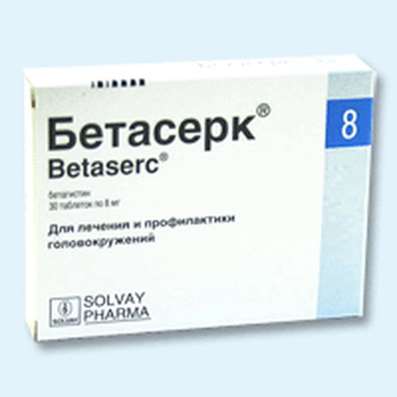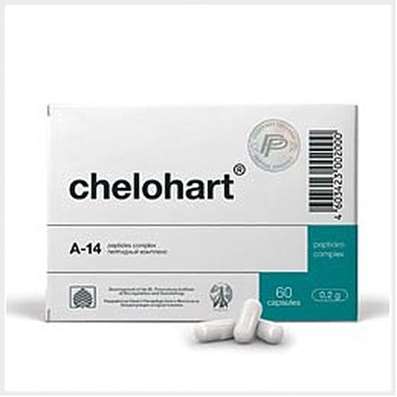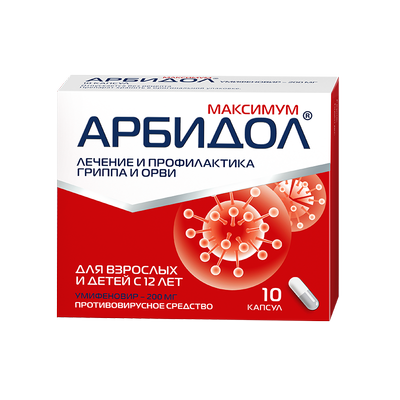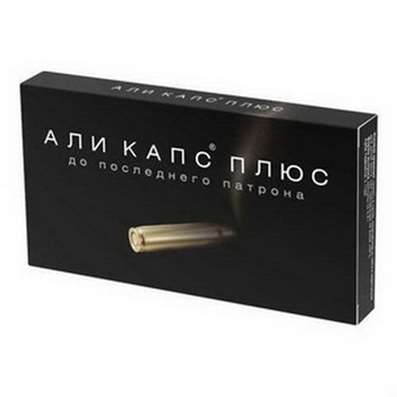Blockers of aromatasia
09 Dec 2016
Inhibitors or blockers of an aromatasia is a class of medicinal preparations which are used for depression of concentration of estrogens in bloods and risings of level of own Testosteron-Depotum and gonadotrophic hormones. Blockers of an aromatasia are applied also to treatment and prophylaxis of a gynecomastia at men.
Falling of level of Oestradiolum after reception of 1 dose of Aromazin
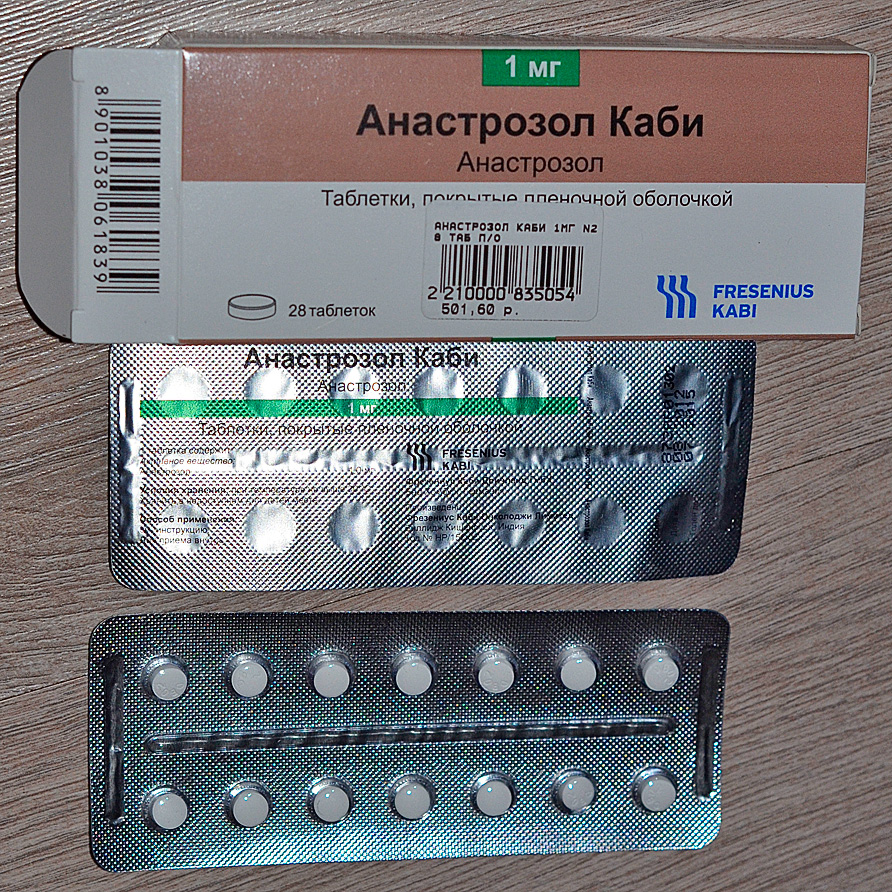
In bodybuilding inhibitors of aromatasia are applied most often during a course of anabolic steroids for:
- prophylaxes of gynecomastia
- augmentations of level of anabolic hormones in a blood
- relief risings (due to elimination of negative impact of estrogens)
- prevention of hypertensia
- decreases of estrogenic suppression of an axis a hypothalamus-pituitary bodies-testicles that leads to more fast restoration.
At creation of a course, it is necessary to consider that not all anabolic steroids are subject to aromatization. Use is justified at administration of such drugs as Testosteron and its derivatives, a methandrostenolone, methyltestosteron-Depotum. Are slightly flavored boldelon, khalotestin.
Researches
Emergence of inexpensive trademark Letrazola (Letroza) led this medicine into the lead. There is a sufficient number of the researches confirming outstanding performance at men. Entering of medicine was followed by the expressed raising of a gonadotrophin (LG). The effective dosage begins with 0,02 mg (100 times lower than therapeutic) and allows to reduce estrogen level by a third. Elimination half-life of letrozole constitutes 2-4 days that allows to accept it every other day. The main shortcoming is the expressed capability to suppress the level of estrogen even in low dosages.
Anastrozol was also well studied on men as means for decrease in estradiol and is widely applied in bodybuilding. It was experimentally shown that the dosage of 1-0,5 mg allows to lower the level of estradiol approximately for 50%. At dealers this medicine can be purchased nearly 10 times cheaper, than in a drugstore. In the large cities inexpensive Anastrozol Kabi meets.
Doctor Maouro G. de Pascale writes in the book: "it is supposed that the estrogen which is formed in case of aromatization of testosterone and other anabolic steroids in departments of a brain and hypothalamus, reduces secretion of hormone, and, therefore, and testosterone development". Gudmann and Gilmann report that the feedback mechanism becomes more active rather a concentration of estrogen, than testosterone". Thus, the explanation for the fact that news agencies are capable to reduce significantly the inhibiting influence of anabolic funds for secretion of own sex hormones is offered. Do not forget take Prostalamin for better results.
Side effects
As is well-known estrogen in moderate quantities is useful even to a male body. Estrogen hormones increase sensitivity of androgenic receptors and increase efficiency of a rate, and also in itself possess anabolic and protective action. Value the estrogen receptors in muscles is in detail described in work of the thesis of Anna Wiik. Thus, in practice, high dosages of inhibitors of aromatasia can excessively suppress the level of estrogen and lead to the following side effects:
- Braking of muscle growth
- Artralgiya (articulate pains)
- Decrease in durability of bones
- Violation of a lipidic profile of blood (increase in cholesterol)
- Fall of a libido and deterioration in a general condition
- Depression
- Subjectively medicines are transferred better, than tamoxifen.
Natural inhibitors of aromatasia
- Resveratrol
- Caffeine
- Nicotine
- Zinc
- Catechins
- Apigenin
- Eriodiktiol
Pharmacological information
The first inhibitors of aromatasia appeared in the pharmaceutical market almost along with tamoxifen. In 1984 it was reported about clinical efficiency of steroid inhibitors of aromatasia of the second generation; emergence of the majority of modern medicines of this class belongs to the end of the 1980th years.
Aromatasia blockers, more precisely its inactivators and inhibitors, were created as antineoplastic medicines and are usually applied in therapy of malignant new growths of a mammary gland, mainly with high activity the estrogen receptors in tumoral fabric. Carry to medicines of this class aminoglutemid (orimeten, mamomit, momomit), testololacton, anastrozol (Arimideks, "AstraZeneca", Great Britain), letrozole (Femara, "Novartis Pharma", Switzerland), eczemestan, formestan, etc.
The fact that, first, one third of cases of a breast cancer belongs to hormonedependent tumors formed the basis for creation of medicines of inhibitors of aromatasia, and, secondly, at women in a menopause intensity of synthesis of steroids in ovaries decreases. During this period estrogen is generally produced in normal fabric (and tumors) a mammary gland, in muscles, fatty cellulose, a liver, skin, connecting fabric, adrenal glands. In these fabrics the steroid androstendion turns in estron and further into estradiol. Transformation of androgens into estrogen (aromatization) happens under the influence of the fermental complex of aromatasia consisting of haemo protein of R-450 cytochrome and flavoprotein.
In clinical conditions use of blockers of aromatasia, preventing accumulation of estrogens, reduces genotoksic effect and intensity of cellular division, and also can influence primary stages of tumoral process.
On a structure blockers of aromatasia can be divided into two larger groups: steroid and nonsteroid.
Though these tables 3.10 are fuller according to the list of representatives of blockers of aromatasia, more corresponds to history of creation of these drugs and the thin mechanism of their action.
Aminoglyutetimid (synonyms: orimeten, momomit, mamomit) in a dose of 250 mg 2 4 times a day (reception along with a hydrocortisone of 30 mkg-days "1, a cortisone acetate of 37,5 mg-days"' or dexamethasone of 6 mg-days "1) inhibits the enzymes stimulating transformation of cholesterol in ๏๐ๅใํๅํ๎๋๎ํ. Thus the level of the main predecessor of estrogen of an androstenedion decreases. at the same time education glyuko-and mineralokortikoid is suppressed. Need of replacement therapy is one of the most essential shortcomings of an aminoglutetimid complicating use of medicine and being a consequence of his not selectivity.
Besides, blocks peripheral aromatization of androstendion in estron. In strength sports this medicine from the List of the forbidden substances and methods is applied by unfair athletes as a blocker of excess synthesis of cortisol and to the prevention of the phenomena of feminization at reception of various air of testosterone.
Medicine is mainly metabolized in a liver, removed through a GIT. This earliest representative of anti-estrogenic medicines from a class of nonsteroid blockers (inhibitors) of aromatasia has high toxicity and negatively influences many physiological characteristics of an organism: increases arterial pressure, worsens function of a thyroid gland and a picture of peripheral blood. Can lead to emergence of rash and insufficiency; has sedative effect therefore we will apply a little where sharpness of reaction and good coordination of movements is required.
It is necessary to notice that in a modern pharmacotherapy of malignant neoplasms (what these drugs are intended for) efficiency of action of blockers of aromatasia is considered more often, relying on later and reasonable classification of generation given in table 3.9.
The first, framed in 1973, nonsteroid inhibitor of aromatasia aminoglutethimide which chemical structure is described as 3 (4 aminophenyl) - a 3-Aethylium-2,6-piperidine-dion, was used as an antiepileptic agent originally (about 30 years ago). However because of toxic influence, in particular, on adrenals, its use it was limited. Later aminoglutethimide was again entered into medical practice as "a medicamental adrenalectomy" and originally found the place in treatment of illness of Itsenko Cushing and the syndrome of the same name. It was in parallel established that this drug has ability reversibly to block a R-450-tsitokhromzavisimuyu aromatasia and to reduce aromatization of androgens in estrogens. At normally functioning adrenals of 250 mg of aminoglutethimide is able to block completely secretion of adrenocorticotropic hormone (AKTG) - there Passed 10 years, and this drug began to use as aromatasia inhibitor at cancer therapy of a mammary gland.
As process of aromatization is closely connected with transformation of androgenic secretion, synthesized testololacton, on chemical structure 4-gidroksiandrostendion, the aromatasia inactivators was the first and very toxic representative of generation steroid (see tab. 3.9, 3.10).
In the corresponding literature there are instructions that about 40% of the athletes who were going in for bodybuilding and earlier applying testololacton and aminoglutimidไ test by-effects of lethargic nature. Now in connection with high toxicity (suppression of function of a thyroid gland, confusion of consciousness, ataxy, lethargy, diarrhea, akhiliya, hypotonia, etc.) these two medicines in clinical conditions and sport are practically not used.
Representatives of this class of anti-estrogenic medicines are divided by the action mechanism on competitive, causing temporary blockade of enzyme, and "suicidal", is irreversible the aromatasia contacting the active centers. The last have exclusively steroid structure, and competitive inhibitors of an aromatasia can be both steroid, and nonsteroid. Nonsteroid medicines, in turn, can possess as selective (block only an aromatasia), and not selective action (oppress synthesis of other hormones, except estrogen, in particular, glyuko-and mineralokortikoid). Taking into account the above data we constituted the scheme (fig. 3.8).
Distinctions in operation of blockers of an aromataza are caused them inhibiting (aminoglutemid, orimeten, mamomit, rogletimid, fadrozol, anastrozol, arimidecs, letrozole, Femara) or the inactivating action (4-gidroksia-drostendion seu 4-OHA, kentaron, formestan, aromazin, plomestan, ekzemestan, atamestan, three-lostan) that is provided in table 3.11.
The second generation of inhibitors of aromatasia which representatives are fadrozol rogletimid and formestan, is less toxiferous and has more expressed antiaromatasiay effect (see tab. 3.9, 3.10).
The nonsteroid inhibitor of aromatasia fadrozol, for example, by about 500 times blocks aromatasia more intensively. Its use reduces contents in a blood of endogenic estrogen by 25 30%, at the same time without exerting impacts on a menstrual cycle and ovulation. About 1 mg 2 times a day is accepted.
Unfortunately, according to randomized researches ATAS and MA-17, this drug was less effective for cancer therapy of a mammary gland (for 81 days time before advance of a disease in comparison with Tamoxifenum decreases). At the same time its toxic action on gepatobiliarny and nervous system, a bone tissue, immunity, let and expressed for 13 18% less than when using the antiaromatasia of drugs of the first generation, remains. According to some authors (Falkson C., Falkson H., 1996), when using a fadrozol the frequency of complications from cardiovascular system makes from 5,2 to 7,4%.
Approximately the same range of side effects is inherent also in a steroid inhibitor of aromatasia a formestana (lentarona). It it is irreversible blocks aromatasia and possesses high degree of selectivity. It is an analog of an androstendion which normal is physiological substrate for an aromatase. Potential opportunities of a formestan concerning depression of level of estrogens by 60 times surpass action of an aminoglutetimid. Formestan for 85% inhibits process of aromatization in peripheric tissues, lowering a producing Oestradiolum by 65%.
The drug is administered intramusculary in a dose of 250 mg 2 times a week or 1000 mg once a week. Its efficiency for a hormonetherapy is comparable with that for Tamoxifenum. The by-effects of generally moderate expression arising at its reception feeling of inflows, a sleepiness, an eruption, a transitional leukopenia, puffiness of the person; also aseptic processes in the place of an injection of drug are described.
Concerning plomestan it is known that it causes the long irreversible binding of aromatasia remaining despite rather fast elimination of drug from a blood plasma. It is necessary to emphasize that at long reception even of the most modern representatives of this class of anti-estrogenic drugs aromatasia blockers development of an osteoporosis, urogenital atrophy and vasculomotor instability, and also the trombotic complications, sometimes with a lethal outcome (thromboembolism of pulmonary artery) is possible. Therefore at use of blockers of aromatasia is necessary to define carefully regimens of their use and to prescribe the corresponding accompanying therapy. In general, drugs of blockers of aromatasia of the second generation gained much smaller distribution, than the first and third.
Anastrozol ("AstraZeneca") is chemical structure and, and, and', and '-tetrametil-5-(1H-1,2,4-triazole-1 - silt-methyl) - meta-benzoilatsetonitril is potent high-selective nonsteroid antiaromatasia drug of the third generation. In the period of postmenopausal (representatives of this generation the antiaromatasia drugs in clinical conditions are calculated on reception by women mainly during this period) anastrozol in a daily dose of 1 mkg causes depression of level of Oestradiolum in a blood for 80% in women, and in pilot studies for 98,1%. This drug in a dose to 10 mg-days"' has progestagen and androgenic activity, doesn't exert impact on secretion of a hydrocortisone and Aldosteronum and doesn't demand replaceable introduction of corticosteroids. Anastrozol by 250 300 times surpasses in antiaromatasia effect aminoglugetimid, and, possessing a long half-life period, it is capable at use in low doses effectively to warn the feminization phenomena.
Release form: arimidecs ("AstraZeneca") 14 tablets on 1 mg; arimidecs (Greece) 14 and 28 tablets on 1 mg; anastrazol ("Britich Dragon", Thailand) 50 tablets on 1 mg. In clinical conditions anastrazol peros on 1 mg of 1 times a day is applied. Drug is quickly soaked up after intake. The maximum concentration of drug in a blood plasma is reached throughout 2 ง after reception on an empty stomach as the concomitant use of a nutrition slightly, but nevertheless reduces rate of absorption of drug, without influencing its degree. About 90 95% of equilibrium concentration of drug are reached in 7 days after the beginning of reception. 40% of an anastrozol are bound to proteins of plasma (albumins). The elimination half-life makes 40 50 h. Less than 10% of a dose are excreted with urine in an invariable look for 72 h.
Drug by means of N-dealkilirovaniya, a hydroxylation and to a glitch-ronirovaniya is metabolized. Metabolites are also excreted with urine. Triazole, the main metabolite defined in biological liquids of an organism has no antiaromatasia activity.
Reception of an anastrozol is followed by inflows in 5,2% of cases, dryness of mucosas of an urogenital zone, a thinning of hair, an abnormal liver function, emergence of an eruption, including erythematic in 3,4%, and also an acne; from a GIT an anorexia, nausea, vomiting and a diarrhea. Anastrazol doesn't cause changes from organs of vision, and also the teratogen properties and the damaging action on DNA doesn't show. Isolated cases of development after reception of anastrozol of esophagitis, a renal failure, an exacerbation of a chronic peptic ulcer are described. In 2004 by results of not blind randomized research 1TA it is shown that when using anastrozol, in comparison with megestrol an acetate, rising of arterial pressure, dyspnea, a sweating, vaginal bleedings, body weight augmentation, rising of appetite meet several times less often.
In bodybuilding anastrozo is applied to prophylaxis of emergence of gynecomastia and a delay of liquid in an organism (it is frequent in combination with androgens like Dianabolum and Testosteron or in a combination with finasteridy). But in this case the athlete receives at the same time whole complex of banned drugs from the List of the forbidden substances and methods besides having own range of the expressed side effects. Uncontrollable use of anastrozol at the athletes who are going in, in particular, for bodybuilding can lead to astenisation, arthralgias and (or) decrease of mobility of joints, a sleepiness, a headache. Though occasionally, there can be tromboembolic episodes caused by reception of an anastrozol and also develop strokes. The immediate and remote effects of reception of anastrozol which is widely advertized in literature for bodybuilders as very harmless can be the most unexpected and very drama as daily reception of only one tablet (1 mg) leads to the expressed hormonal splashes more than at 80% of the persons accepting drug.
Representatives of the third generation of blockers of aromatasia anastrozol and, later, letrozole and vorozol, were developed as drugs of the first and second line for treatment a receptor - a positive disseminate breast cancer.
Letrozole (Femara) also belongs to nonspecific competitive inhibitors of an aromatase. On chemical structure this derivative benzgidrintriazola 4, 4 '-[(1 N-1,2,4-triazo-1-il-metilen) dibenzonitrile. Such inhibitors of an aromatase as letrozole work by competitive linkng with a subjedinitsa of this enzyme a genome of R-450 cytochrome, drug prevents transformation of androgens to estrogens in fatty tissue, a liver, sceletal muscles and reduces concentration of the last in a systemic blood flow by 75 95% without significant effect on synthesis of corticosteroids in adrenals, and also Aldosteronum and hormones of a thyroid gland. Letrozole, according to different authors, blocks estrogen receptors at 50 75% of patients. In comparison with anastrozol is more expressed (to 98,8%) blocks activity of R-450 cytochrome of aromatasia and significantly reduces the level of estrogens (Oestradiolum, Estronum and Estronum of sulfate), however, the clinical importance of these data is acritical.
Drug is produced in tablets on 2.5 mg. Dose effect therefore the scheme of reception has to be accurately calculated is characteristic of letrozole person usually on one tablet irrespective of meal then it is quickly and completely soaked up in a GIT is applied once a day. Extent of its absorption doesn't depend on meal. Equilibrium concentration in a blood plasma is reached on average in 4 (from 2 to 6) weeks of use. Drug has no cumulative properties. With proteins of a blood plasma, mainly with an albumin, about 60% of letrozole are bound. It gets and into erythrocytes where its concentration reaches 80% of level in a blood. Letrozole is quickly and evenly distributed in tissues. Drug with the participation of isoenzymes of R-450 cytochrome with formation pharmacological of an inactive karbinol metabolite (4.4 '))))))))))))))))))))))))) and its ketone analog is metabolized. The main way of elimination of letrozole from an organism through an urinary system. Not less than 75% of the entered dose are excreted in the form of a glucuronide of karbinol metabolite, and about 6% in the form of not changed letrozole.
At initially existing expressed abnormal liver functions (rising of activity of hepatic transaminases) drug shouldn't be prescribed. Side effects are usually expressed poorly or moderately and are similar to those at reception of anastrozol. Besides, at 0,6 2% of the women accepting drug bloody vulval allocations, at 1,7% leukorrhea, and also a sweating (1,1%), in an insignificant part of cases a dyspnea are observed; the thrombophlebitis (0,6%) can develop. It is necessary to notice that uncontrollable reception of letrozole by body builders quite often leads to a lack of coordination and promotes dispersion of attention.
Nonsteroid blocker of aromatasia of the third generation is vorozol. In comparison with letrozole, it has almost identical influence on the level of estrogens in a blood, but 3 months later after the beginning of reception leads to statistically reliable rising in blood serum of patients with cancer of a mammary gland of markers of a resorption of bones. Moreover, at 30% of women in an interval from 1 to 6 months and up to three years essential depression of density of a bone tissue is registered. The most adverse of side effects of this drug is the established rising of content of estrogens in a blood exceeding them depression under the influence of blocking of aromatasia. It became clear that these changes correlate with rising of level of markers of resorption of bones (Dowsett et. al., 1999). In a small research on the healthy menstruating female volunteers it was shown what vorozol in appreciable (more than 74%) parts of cases leads to formation of cysts of ovaries, hyper stimulation of ovaries with a pain syndrome and the increased liquid secretion in the field of Duglasov spaces (Goss et. al., 2004). So far randomized researches of influence of long reception of this drug on efficiency of treatment and frequency of development of an osteoporosis aren't conducted. The known data indicate inadmissibility of use of drug at women. In sports pharmacology it is practically not used also now.
The steroid representative of the third generation of ingbitor of aromatasia is eczemestan which, entering covalent interaction with aromatasia during the first cycle of oxidation, leads to an effective selective irreversible inactivation of enzyme and reduces synthesis of estrogen in an organism for 97%. Like an anastrazol and letrozole, he is rather well had by patients. Is issued for reception of per os in the form of tablets on 25 mg, as makes a daily dose at treatment of a disseminate breast cancer at post-menopausal women. Ekzemestan which in the USA is approved and is used in an oncology as drug of the first line of endocrine therapy of a breast cancer and after administration of drugs of class IMRE, so far in clinical conditions is studied insufficiently. However it is established that in relation to process of aromatization and extent of accumulation of estrogens it has activity, higher, than Tamoxifenum, but less high, than anastrozol (a comparative research of AS CO, 2002).
Clinical tests showed what at a disseminate breast cancer ekzemestan is more expressed, in comparison with Tamoxifenum, slows down advance of a disease, but practically doesn't influence processes of an innidiation. Results of the randomized researches MA-17, ATAS, IES showed that on a toxicity range it differs from nonsteroid inhibitors of aromatasia, however therapeutic value of these data wasn't studied. Drug is subjectively rather well transferred by patients; the most frequent side effects are inflows (19%) and nausea (21%). On expressions of influence on development of an osteoporosis and frequency of emergence of pathological fractures at the persons accepting ekzemestan doesn't concede to letrozole. At the same time the risk of development of pathological fractures in comparison with control group (placebo) for ekzemestan is enlarged by 60%! Arthralgias accompany administration of drug in 4,5% of cases that above, than for Tamoxifenum (3,6%). However the risk of development of a hysterocarcinoma, and also arterial and venous clottages is significantly lower for an ekzemestan (and letrozole also), than for Tamoxifenum. Frequency of emergence of dryness and an itch in urogenital area at reception of an ekzemestan is higher, and allocations from a vagina below, than when using Tamoxifenum.
Action of ekzemestan on mental capacities in the listed above testing of MA-17, ATAS, IES wasn't studied. However everything, accepting anti-estrogenic medicines, it is necessary to think that the lack of endogenous estrogen, even against the background of replacement therapy, significantly increases risk of development of dementia in the future.
Ergo-pharm 6-OXO is a structural analog of medicines of the first generation treats the newest irreversible inhibitors of aromatasia of steroid nature (3,6,17-androstentrion). Its action is similar with formestan, but influence on increase in level of testosterone in blood is expressed twice stronger. Efficiency for its clinic isn't researched yet. Medicine in high doses is applied by cycles on 4 6 weeks once a day.
The T-Bomb II substance which is recently synthesized by MNR corporation having effect of a secondary messenger also belongs to inhibitors of aromatasia. T-Bomb II, owing to the patented Optimone 5ฎ mechanism, by activation of secretion of hormone and simultaneous blocking of SHBG (Sex Hormon Binding Globulin) the protein connecting testosterone and an irreversible inactivation of an aromatasia, increases the level of endogenous testosterone in an organism for 400%. The received T-Bomb II substance contains, in addition to SHBG, fatty acids, in particular, linoleic, linolenic, stearin and olein. Besides, amino acids glycine and L-arginin, extract of yakorets creeping are its part (Tg. terrestris), other vegetable components and mineral additives in the form of oxide of magnesium, aspartate of zinc and gluconate of copper. The mechanism of blocking of aromatasia, pharm dinamik and pharmacokinetics of this substance are almost not studied so far, and preclinical and clinical testing by this moment aren't ended.
In the pharmacological market for weight-lifters there is a product krizin (5.7-digidroksiflavon) which body builders use in very high doses. It also has antiaromatasia properties and is issued in two forms MRM-Chrysin containing 500 mg of a net krizin on the capsule, and SciFit-Chrysin ES containing twice less than active substance. Descriptions of side effects don't give developers, but it is necessary to remember that all medicines and substances possessing antiaromatasia action are capable to do essential harm to an organism of the athlete and treat the List of the forbidden substances and methods.

 Cart
Cart

